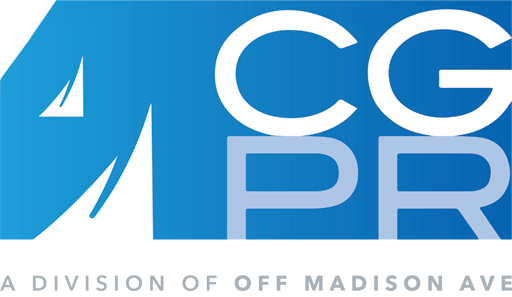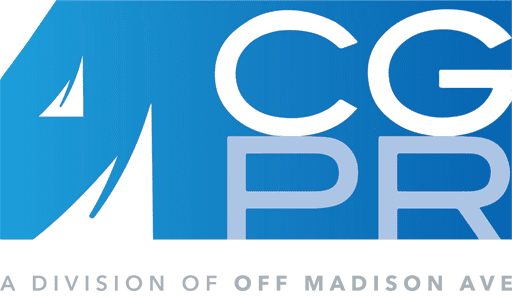January 29, 2025
Today, I had the opportunity to share insights with SGI-Europe about how European outdoor brands can use can use communications to help adapt to quickly changing U.S. policies. Thank you Claudia Klingelhöfer, chief digital officer for EDM Publications, for the opportunity to provide insights and for your collaboration.
Enjoy the read.
One week in – Communication strategies for European brands facing US policy shifts
This Op-Ed by Chris Goddard, founder of US-based CGPR, a division of Off Madison Ave, explores how European active lifestyle brands may address policy changes in the US while leveraging communications as a powerful tool for resilience, adaptation, and growth. From trade and environmental regulations to talent mobility and consumer behavior, proactive and authentic communication will be the foundation of navigating these shifts successfully, says Goddard
It’s been one week since US President Donald Trump took office, and the changes are coming fast and furious. The new administration has already introduced policy shifts that will have wide-reaching implications, especially for industries reliant on global trade, environmental sustainability, and consumer trust.
These policy shifts will have ripple effects far beyond U.S. borders. The European active lifestyle industry holds a significant place in the global market, distinguished by its progressive technologies, commitment to sustainability, and ability to resonate with consumers worldwide. With the U.S. e.g. representing roughly one-third of the global outdoor market, European brands must adapt thoughtfully and strategically.
Key US Policy Changes and Their Potential Impact
Unpredictable trade policies are up first, requiring clear pricing narratives
As evidenced by the initiative with Colombia, the new administration’s unpredictable trade policies, including tariffs and visa restrictions, are already creating challenges for European brands exporting to the US. These shifts can increase costs, forcing brands to adjust their pricing strategies.
Role of communications:
- Transparent communication is essential when addressing price changes with retailers and consumers. Crafting clear, empathetic messaging that highlights the premium value, craftsmanship, and product sustainability can help maintain consumer trust.
- Use storytelling to illustrate how these products remain worth the investment despite increased costs. For example, showcase the longevity and quality of European products compared to less expensive alternatives.
Environmental regulations will be less of a priority – and in some cases, may be walked back
The administration’s decision to withdraw from the Paris Climate Agreement and scale back environmental regulations pose challenges for sustainability-focused European brands. These rollbacks may reduce consumer and regulatory pressure on U.S. companies to prioritize eco-friendly initiatives, creating a competitive landscape that values cost over sustainability.
Role of communications:
- Double down on communicating sustainability credentials. Use third-party certifications, such as Fair Trade or PFAS-free materials, to demonstrate commitment.
- Develop campaigns that connect environmental efforts to consumer values, such as reducing the carbon footprint or supporting a greener future for children.
Immigration and travel policy changes are already under a microscope
Changes to immigration and travel policies could hinder talent mobility and reduce international tourism, including visits to iconic U.S. outdoor destinations. This will affect the broader outdoor industry, including European brands reliant on global expertise and tourism-driven sales.
Role of communications:
- Emphasize the role of diverse, global teams in driving innovation. Share behind-the-scenes stories that highlight how international talent contributes to product development.
- Collaborate with travel and tourism partners to promote U.S. outdoor destinations, ensuring the outdoor lifestyle remains aspirational for both American and international consumers.
Implications for European brands
Supply chain challenges demand honest dialogue
The potential for supply chain disruptions and rising costs requires proactive measures. Brands are already looking at diversifying their sourcing and distribution strategies while preparing to explain delays or cost increases to stakeholders.
Role of communications:
- Provide frequent updates on supply chain efforts through newsletters, social channels and retailer communications.
- Highlight transparency as a brand value, explaining how supply chain challenges are being addressed to maintain product quality and reliability.
Shine a light on certifications as they are an opportunity to stand out
As US regulations lag behind European sustainability standards (though we are seeing increased initiatives such as in California and New York), European brands can position themselves as leaders by showcasing their certifications and eco-friendly practices.
Role of communications:
- Educate US consumers about the meaning and value of European certifications. Create content that explains how these standards benefit both the environment and the consumer.
- Partner with retailers and advocacy groups to amplify these messages, turning sustainability into a competitive advantage.
Brand positioning in the US market or “buy American or else”
The administration’s “Buy American” rhetoric may create challenges for European brands. To succeed, they must differentiate themselves by emphasizing their heritage, quality, and innovation.
Role of communications:
- Position brands as a premium option that complements American values, such as adventure, innovation, and quality.
- Collaborate with US-based influencers and retailers to create localized campaigns that resonate with American consumers.
Strategic communication as the foundation for success
Proactive messaging – don’t be shy, it will help build trust
In uncertain times, brands that communicate consistently and authentically will build trust with consumers and partners.
Best practices:
- Anticipate questions about price changes or delays and address them proactively in messaging.
- Simplify complex issues, ensuring communication is clear and credible.
Step up digital and social media engagement to break through an uneven news landscape led by Truth Social
With President Trump relying on platforms like Truth Social for key announcements, the news cycle will be unpredictable. European brands must leverage digital and social media to maintain visibility and control their narratives.
Best practices:
- Use social media to tell brand stories, highlight history, and showcase sustainability initiatives.
- Engage directly with consumers through live Q&A sessions, behind-the-scenes content, and interactive campaigns.
Collaboration and partnerships will fortify a brand’s reach
Strategic partnerships with US-based retailers, advocacy groups, and influencers can amplify a brand’s reach and credibility.
Best practices:
- Launch joint campaigns that emphasize shared values, such as sustainability, health or adventure.
- Ensure partnerships feel authentic and mutually beneficial to resonate with your audience.
Opportunities for innovation and growth
Develop markets for new emerging consumers looking for solace
Economic uncertainty often drives consumers to seek solace in the outdoors or just in working out. European brands can cater to this demand by introducing products that appeal to first-time adventurers, e.g. urban outdoor enthusiasts.
Role of communications:
- Create targeted campaigns that demystify sports activities for newcomers, emphasizing accessibility and inclusivity.
- Leverage user-generated content to inspire and connect with these emerging segments.
ImageExpanding Direct-to-Consumer (DTC) channels helps cut out the noise
Focusing on DTC sales enables brands to build closer relationships with consumers and mitigate some trade-related challenges.
Role of communications:
- Use personalized email marketing, loyalty programs, and social media engagement to foster strong connections with your audience.
- Share insights from consumer data to demonstrate how your products meet their specific needs.
Amplifying European certifications shines a light on higher European standards
Sustainability remains a priority for many US consumers. Highlighting your adherence to higher European standards can set your brand apart.
Role of communications:
- Develop content that explains how your products are made, from sourcing to production, and why these practices matter.
- Create campaigns that celebrate your commitment to circularity, innovation, and reducing environmental impact.
Conclusion: Stay agile and be prepared
In just one week, the Trump administration has made it clear that rapid, sweeping decisions will define its approach. For European active lifestyle brands, navigating these policy shifts means staying agile while holding firmly to their core values.
In times like these, the Boy Scouts’ (now Scouting America) motto feels especially fitting: “Be prepared.” Adaptation, grounded in purpose and proactive communication, will be the key to thriving in this evolving landscape.

